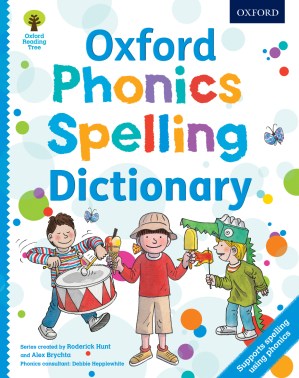In 2012 the government introduced an annual phonics check for all children in England in year 1, which supports the synthetic phonics method of teaching reading in schools.
You may feel unsure about how to approach helping children learn to read using phonics. In this post we’ll be explaining briefly what phonics is, along with some information on the phonics screening check. We hope you find it helpful!
You’ll find lots more information on phonics at www.oxfordowl.co.uk
So what is phonics?
Synthetic phonics is a method used in schools as a way of teaching children how to read.
Children are taught to read letters, or groups of letters, by saying the sound(s) they represent. Children can then start to read words by blending the sounds together from left to right to make a word.
There’s a really useful video on the Oxford Owl website, where phonics expert Ruth Miskin explains what phonics is, along with some top tips on getting started with phonics.
You can listen to the correct way to say the sounds in the Phonics Made Easy section of the Oxford Owl website, as well as how to blend the sounds into words.
The Year 1 Phonics Screening Check
The Year 1 Phonics Screening Check is taken individually by all children in England in Year 1 (children age 5-6) in June. It is a short, light-touch assessment used by teachers to ensure that children are making sufficient progress in their phonics skills and are on track to become fluent readers who can enjoy reading for pleasure and for learning.
The handy Phonics Screening Check FAQ guide on the Oxford Owl website, from phonics advisor Laura Sharp, provides lots of information on the check. The most important thing to remember is that it is a check, not a test, and is designed to identify whether a child needs any additional support so that they don’t fall behind.
Phonics support at home
There is a wealth of free support and advice on phonics on the Phonics Made Easy section of the Oxford Owl website.
We also produce a range of useful resources for parents wishing to support their child’s phonics learning at home, based on how children learn at school.
For some fun phonics practice at home, My Phonics Kit is specially developed for 6 year olds. It contains 3 full-colour phonics workbooks, a CD-ROM with interactive eBooks and activities, reward chart, stickers, and leaflet for parents with information about the phonics screening check and features the much-loved Read with Biff, Chip and Kipper characters.
We’ve had lots of great feedback on the kit from parents; here are just a few from Mama Syder, Read it Daddy, and Mad House Family Reviews
Complementing My Phonics Kit are My Phonics Flashcards. Young children learn best when they are having fun, and these playing cards help practise phonics skills by reading words and playing games.
We also publish a unique Oxford Phonics Spelling Dictionary, where words are ordered by initial phonic sound, with subsections to show how the same sounds appear in the middle or at the end of a word. This makes it easy to explain how ‘sun’ and ‘Cinderella’ both start with the ‘s’ sound, and how ‘dance’ has the same ‘s’ sound at the end.
And don’t forget, you’ll find lots more information on phonics at www.oxfordowl.co.uk








[…] For more information on phonics, visit the Oxford Owl website or read our recent phonics post. […]